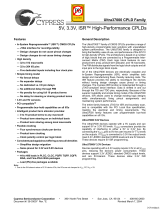
Server BMC (Baseboard Management Controller) also
known as “iDRAC Express” boot block flash
Details
Size: 2 MB
Type: [e.g. Flash PROM, EEPROM]: Serial Flash
Can user programs or operating system write data to it
during normal operation?
No
Does it retain data when powered off? Yes
Purpose? [e.g. boot code] iDRAC boot loader and configuration (i.e. MAC
address), Lifecycle log.
How is data input to this memory? Data pre-programmed or update using Dell utility
which is a DOS or Windows or Linux based
executable containing firmware file and loader
How is this memory write protected? Software write protected
Remarks Bad contents yield the iDRAC inoperable and is
unrecoverable in the customer environment. Note the
lifecycle log is automatically updated by the iDRAC as
various system component FW, HW and SW versions
are changed.
Server BMC (Baseboard Management Controller) also
known as “iDRAC Express” Internal Flash
Details
Size: 1 GB
Type: [e.g. Flash PROM, EEPROM]: NAND Flash
Can user programs or operating system write data to it
during normal operation?
No
Does it retain data when powered off? Yes
Purpose? [e.g. boot code] iDRAC Operating System plus Managed System
Services Repository (i.e. Unified Server Configurator,
OS drivers, diagnostics, rollback versions of various
programmables)
How is data input to this memory? iDRAC OS: Loading flash memory requires a vendor
provided firmware file and loader program which is
executed by booting up the system from a floppy or
OS based executable containing the firmware file and
the loader. System loaded without a good iDRAC
firmware image yields a non-functional iDRAC.
Managed Services Repository: Various partitions are
loaded via vendor provided firmware file and loader
program just like iDRAC OS.
How is this memory write protected? Software write protected










